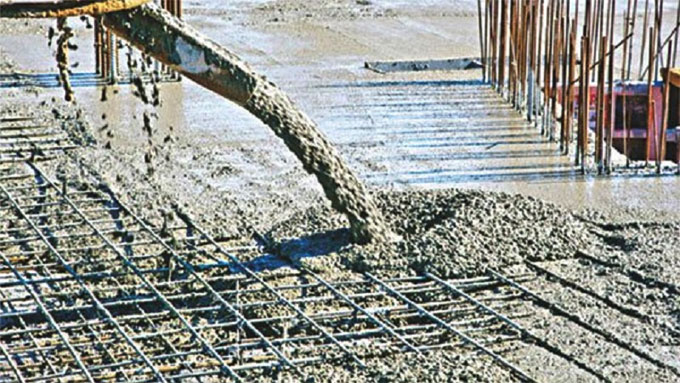Today, there are many different types of building materials that can be used to build a home or business, and each one has its own advantages and disadvantages.
When it comes to plastic, brick, and concrete, plastic may be the cheapest option out of the three, but it also has the most flaws when it comes to long-term durability. Meanwhile, concrete can be more expensive than plastic, but it’s also far more durable in almost every way that matters to you as a homeowner or business owner.
Durable Plastic
The materials used in plastic bricks are durable and inexpensive. They also come in a variety of colors, so they’re easy to coordinate with other types of building materials. However, these bricks can be somewhat fragile if exposed to extreme temperatures, so they shouldn’t be left out in high heat or cold for an extended period. Some examples include LEGO® and Duplo® bricks made by Lego Group NV.
Traditional Concrete
One-part Portland cement is mixed with sand and gravel to create concrete. It’s popular due to its durability, strength, and relatively low cost. This mixture can be poured into molds or allowed to harden naturally over time in place. To construct a building using reinforced concrete means including rebar within layers of concrete, which makes it stronger than regular plain concrete. Reinforced concrete is used in footings and foundations, roadways and highways (asphalt overlay), parking structures (underground floors), slabs for flooring (basements/garages), bridge decks/supports/decks, and retaining walls.
Brick is good for Modern Designs
Brick is a hardy material that was originally used for practical purposes. It proved to be so durable that it has become one of the most popular building materials in construction today. Brick is not just aesthetically pleasing—it also performs well in all kinds of weather, which makes it a smart choice for modern designs and luxurious homes.
Reinforced Concrete
Concrete is one of man’s oldest building materials, used since ancient Roman times. However, it has evolved dramatically over time to become a significantly more durable material. Reinforced concrete is one example—it’s reinforced with steel rods that help prevent cracks and other structural defects. It can be produced in many different forms—cast-in-place concrete or precast concrete (which involves baking individual pieces at a facility away from construction sites), among others.
Durable Brick
If you’re looking for very sturdy building material, brick is a great choice. The main draw to brick is that it’s very strong and won’t crumble like many other building materials—even in extreme weather conditions. On top of that, bricks are aesthetically pleasing, which is an added bonus if you plan on living in your home for years to come. It should be noted, however, that brick isn’t necessarily cheap; it can actually be quite expensive to install large portions of a house with bricks versus cheaper alternatives. Also, depending on how much maintenance you want to take care of yourself (ex: repainting), you may have to hire someone else down the line who specializes in maintaining old buildings or refurbishing older homes.
Soil, Sand, and Stone
Though they’re used in many ways, soil, sand, and stone are all made up of similar elements. Soil is created by decaying plant and animal material; stone comes from rocks that were once molten lava, white sand is composed of tiny particles found in oceans or other bodies of water. All three materials add incredible stability to a construction site. Here’s how each is used -Soil: Because it has a good load-bearing capacity, the soil is typically used on its own to fill low areas that could be problematic during heavy rains—or when equipment passes over—if there weren’t something holding them down. It can also be mixed with cement as a building material (mortar) for foundations, blocks, and retaining walls.
Wood
There are different types of wood used in construction. Woods used in residential and commercial buildings include oak, cedar, redwood, pine, and walnut. Redwood is perhaps one of the most notable examples; however, it’s also among the most expensive building materials. After its widespread use during World War II due to a shortage of steel and other metals, the wood began to fall out of favor.
Metal
Metal is one of the most cost-effective building materials available and can be used in both permanent structures, like homes and commercial buildings, as well as mobile buildings, such as carports and sheds. There are two main types of metal used in construction: steel and aluminum. While they look very different, they actually serve many of the same purposes in a building. The main difference between them is their weight—aluminum is much lighter than steel.
Cement
Cement is a construction material that binds fine particles together. The cement is mixed with aggregates like sand and water to create concrete, which can be used for sidewalks, driveways, and foundations. Cement is also used to create mortar, stucco, grout, and plaster. Masonry workers mix cement and sand with water to make mortar, a clay-like substance that acts as an adhesive between bricks or other masonry units (such as stone or block).
Concrete: Concrete comes in two basic types: plain old concrete and reinforced concrete. Plain old concrete just consists of sand, gravel or other coarse aggregate material, along with Portland cement.
Also Read
Faucets 101: 5 Things Builders Need To Know
5 Things You Should Know About Fabric Buildings

